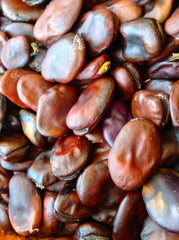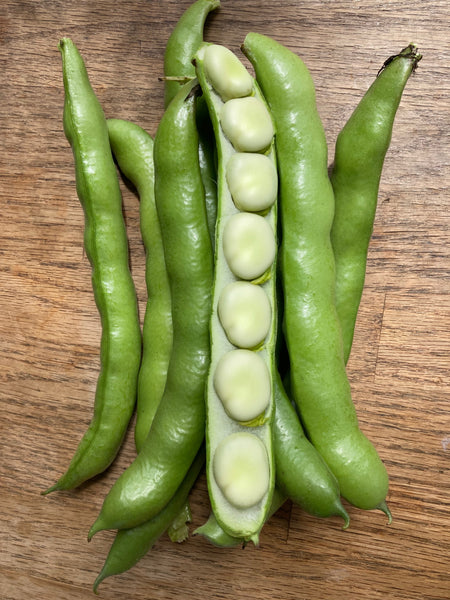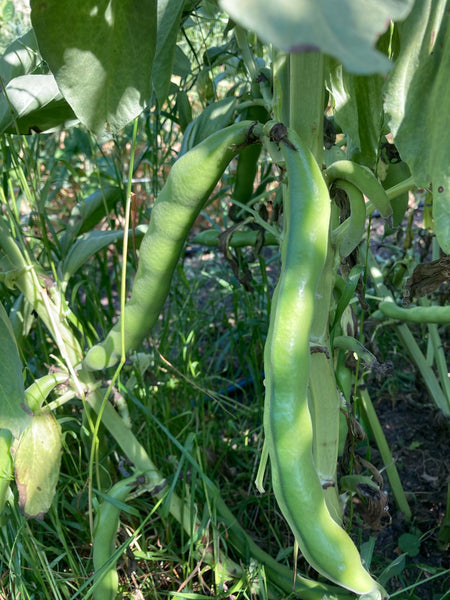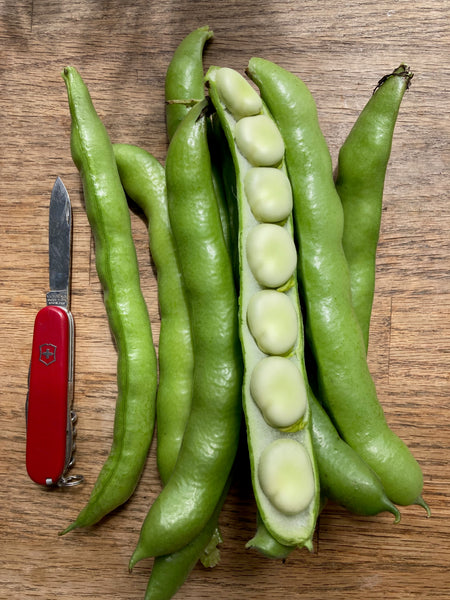Long Yellow
Vicia faba
HOW TO GROW FAVA BEAN
Favas are hardy annuals, tolerating frost but not prolonged freezes. In mild climates zone 7 or higher, sow 3 weeks before the first hard killing frost for spring harvest. Favas grown in zone 6 and below should be planted only in the spring. Sow in early Spring for summer harvest, February to early April. Plants do not tolerate heat well. Eat fresh when pods are green or harvest for storage and seed when pods are black. Among the highest rates of nitrogen fixing for beans. Soil pH 6.1-7.8. Hardiness zones 3-11. Annual.
Days from maturity calculated from the date of seeding. Average 15-20 seeds per ounce, average 275 seeds per pound. Federal germination standard: 75%. Usual seed life 3-6 years. Isolation distance for seed saving: 1 mile.
Planting Depth 1-2”
Soil Temp. Germ. 55-75˚F
Days to Germ. 5-30
Plant Spacing 4-12”
Row Spacing 12”
Days To Maturity 70-240
Full Sun, Moist Well Drained
Days from maturity calculated from the date of seeding. Average 15-20 seeds per ounce, average 275 seeds per pound. Federal germination standard: 75%. Usual seed life 3-6 years. Isolation distance for seed saving: 1 mile.
Planting Depth 1-2”
Soil Temp. Germ. 55-75˚F
Days to Germ. 5-30
Plant Spacing 4-12”
Row Spacing 12”
Days To Maturity 70-240
Full Sun, Moist Well Drained
Long Yellow Seed Count
1 Ounce ≈ 65 seeds
.25 Pound ≈ 260 seeds
- 1 oz$4.10
- 1/4 lb$15.00
This reliable, delicious fava bean is good for eating as a fresh shell bean, and excellent planted as a cover crop. The fava leaves are also tasty when added to salads. Saltwater Seeds acquired this Polish Long Yellow Fava bean from Maria Bullock of the Bullock Permaculture Homestead in the Pacific NW in 2015. Tags:...
This reliable, delicious fava bean is good for eating as a fresh shell bean, and excellent planted as a cover crop. The fava leaves are also tasty when added to salads. Saltwater Seeds acquired this Polish Long Yellow Fava bean from Maria Bullock of the Bullock Permaculture Homestead in the Pacific NW in 2015. Tags: Color: Yellow, Season: Summer.
Learn More
Meet Your Farmer
We promote fair trade, organic practices and environmental responsibility throughout the Restoration Seeds supply chain. Below are the family farmers and seed suppliers who bring our open pollinated seeds to you.
Saltwater Seeds
Certified Organic by WA Dept. of Ag.
Seed grower since
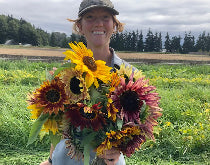

We are focused on growing open-pollinated seeds adapted for the Maritime Northwest. We are inspired by the endless combinations of colors, textures, flavors, and shapes of the plants we work with.As a small, diversified business, we are committed to contributing to our small-scale agricultural economy by finding, selecting, and stewarding varieties that are productive, delicious, beautiful, and well adapted to our climate.
Reviews
